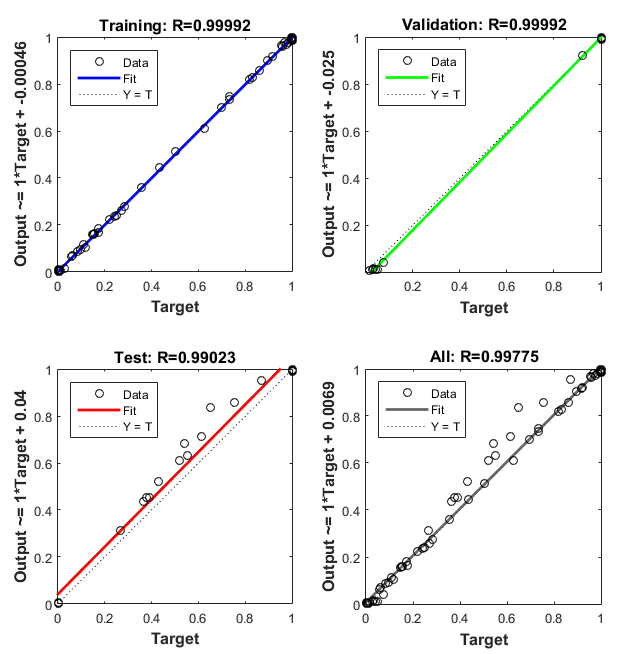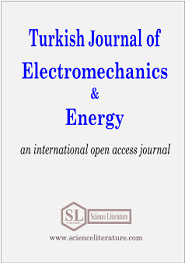
An Assessment of Energy Production Capacity of Amasra Town Using Artificial Neural Networks
Abstract
This study aimed to estimate the amount of power can be generated using wind turbines in accordance with the wind speed data obtained from Amasra town, using Artificial Neural Networks (ANN) method. In the training of artificial neural network, wind speeds ranging between 0 and 20 m/s were used as artificial neural network input while the production data from six wind turbines (Gamesa G97-2MW, Suzlon S.88-2100, Siemens SWT-2.3-113, N100-2.5 MW, E82-3 MW, V117-3.3 MW) were used as ANN outputs. Moreover, wind speed data collected from Amasra during 2016 was used in the test phase. Hence, the energy generation capacity of Amasra was analyzed with different wind turbines.
Full Text:
PDFReferences
E. Yağcı, Comparison and error analysis of different methods used for wind speed extrapolation, M.Sc. Thesis, İstanbul University, Energy Science and Technology Department Energy Science and Technology Program, İstanbul. (2013).
R. J. Wai, W. H. Wang, C. Y. Lin, High- performance stand-alone photovoltaic generation system, IEEE Transactions On Industrial Electronics, 55(1), 240-250, (2008).
K. Azad, M. G. Rasul, R. Islam, I. R. Shishir, Analysis of wind energy prospect for power generation by three weibull distribution methods, Energy Procedia, 75, 722-727, (2015).
U. Elibüyük, İ. Üçgül, A. K. Yakut, Wind power plant project to Suleyman Demirel University, Süleyman Demirel University, Journal of YEKARUM, 3(2), 22-32, (2016).
A.V. Da Rosa, Fundamentals of renewable energy processes, 3rd ed., Amsterdam, Netherlands, Elsevier, (2013)
REN21, Renewables 2017 Global Status Report, http://www.ren21.net/wp_content/uploads/2017/06/GSR2017_Full-Report.pdf, ISBN 978-3-9818107-6-9, (Accessed 2016).
C. İlkiliç, İ. Türkbay, Determination and utilization of wind energy potential for Turkey. Renewable and Sustainable Energy Reviews, 14(8), 2202-2207, (2010).
TUREB, Turkey wind energy statistics report Turkey wind energy association, http://www.tureb.com.tr, (Accessed 25.02.2017).
E. Öztemel, Yapay sinir ağları, Papatya Yayıncılık, İstanbul, (2003)
C. Hamzaçebi, Yapay sinir ağları: tahmin amaçlı kullanımı matlab ve neurosolution uygulamalı, Ekin Yayınevi, Bursa, (2011)
L. Fausett, Fundamentals of neural networks: Architectures, Algorithms and Applications, Prentice Hall, New York, (1994)
Ç. Elmas, Yapay Zeka Uygulamaları, Seçkin Yayıncılık, Ankara, (2011)
Ö. Doğancı, M. Ertürk, A. Özsunar, A. Arcaklıoğlu, A study of the estimation of the wind energy in the central-western Black Sea region, Journal of Advanced Technology Sciences, 5(1), 153-163. (2016).
B. Kılıç, E. Arabacı, Estimation of wind speed values in future of Burdur city using artificial neural networks (ANN), Dumlupınar University, Journal of Science and Technology of Dumlupınar University, 45-50, (2015).
S. Islak, M, Akkaş, Ü, Kaya, H. Güleç, Estimation of mechanical and physical properties of Cu-Tic composites by artificial neural networks (ANN) Model, Technological Applied Sciences, 12, 122-129, (2017).
H.G. Güleç, H. Demirel, Artificial neural network based prediction of intensity of insolation in the city of Kastamonu using meteorological data, Technological Applied Sciences, (2017).
T. Yiğit, A. H. Işık, M. Bilen, Web based educational software for artificial neural networks, International Conference on Education in Mathematics, Science & Technology, May 16 – 18, 629-632, (2014).
General directorate of renewable energy, http://www.eie.gov.tr/yekrepa/BARTIN-REPA.pdf (Accessed 08.03.2017).
URN: https://sloi.org/urn:sl:tjoee3189
Copyright (c) 2018 Turkish Journal of Electromechanics and Energy

This work is licensed under a Creative Commons Attribution-NonCommercial 4.0 International License.

 Indexed in:
Indexed in:
















